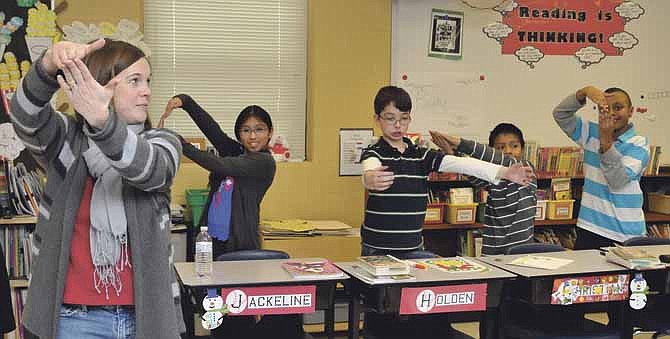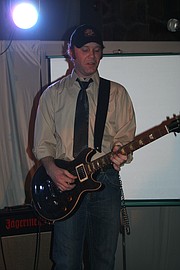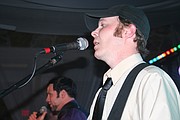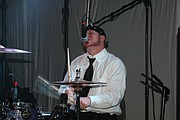One of the largest "employers" in Cole County - with possibly the biggest economic footprint, although it's largely invisible - isn't an employer at all.
It's a pension system. Specifically, it's two systems: the Public School Retirement System, for certified educators, and the Education Employee Retirement System, for other school personnel. With 3,838 retirees on the "payroll" in central Missouri alone, PSRS/PEERS distributes more than $104 million in annual benefits into the Mid-Missouri economy.
"We paid out $2.16 billion in assets and $1.8 billion stayed in Missouri. The economic engine is amazing," said Steve Yoakum, executive director of the pension system.
Jason Hoffman, who serves on the PSRS/PEERS board and is chief financial officer for the Jefferson City Public Schools, said: "I'm not sure where we would rank, but I bet we would be one of the largest "employers' in the state, if not the largest."
A team of advisers oversees approximately $32 billion in assets from a moderately sized office building on Truman Boulevard.
"We are the 45th largest pool of assets in the United States and 107th in the world," said Steve Yoakum, the systems' executive director.
Although some pension systems across the nation are on the ropes, Missouri's is not.
"We are governed by state law," Yoakum said. "But we have a great deal of independence, and that's why we've been successful. We are a very independent board running a very independent trust fund."
Approximately 81.5 percent of the PSRS's liabilities - basically, promises to teachers - are "pre-funded," meaning they are covered by the fund's existing assets.
"We have $32 billion in assets and $38 billion in liabilities, which leaves a $6 billion unfunded liability," Yoakum said.
He compared that "debt" to a family's home mortgage. "We're designed to pay that off over 24.8 years," he said. "But that's not bad."
If Missouri's funded ratio is 81.5 percent, Illinois' is in the 30 percent range. "They are worried because any hiccup in the economy has a big effect," Yoakum said.
Yoakum said every year the system must find ways to cope with about $1.5 billion in new "promises" to teachers. "Because every day the expense of providing retirement goes up. The average salaries of teachers increase and the number of years of service increases," he explained. "The promises grow."
He feels confident about his organization's future. In mid-February, Yoakum delivered his ideas, and concerns, to an assembly of the Missouri School Boards' Association. More than 200 members gathered at the Capitol Plaza Hotel for their annual legislative forum.
"Is the plan sustainable?" he asked listeners rhetorically. "Yes."
Because the PSRS/PEERS board is independent, and diligent, Missouri's plan has navigated the stormy economy and remains in "good condition," he said.
That isn't to say the pension system is without challenges.
"A long way from clear sailing'
He said when the tech bubble burst in 2000, the pension fund's market value plunged below its accrued liabilities. By 2009, the losses were "staggering," he said. He compared the situation to a 500-year flood - an event most people don't expect in their lifetime.
"We were down 19.5 percent ... $1 of every $5 left the Missouri pension fund," he lamented. "The situation has improved, but we're a long way from clear sailing."
Yoakum said the world economy is still in flux: "We're not overly confident all the problems are behind us."
The system's current asset allocation is: 14 percent in Treasury notes and Treasury inflation-protected securities; 31 percent in U.S. stocks; 7.6 percent in real estate; 14.8 percent in hedged assets; 6.7 percent in private equity; 9 percent in bonds and 15.7 percent in international stocks. The remainder is private credit.
"Our investible universe is the world," Yoakum said.
After the Missouri team determines the plan's asset allocation, a private equity adviser - Towers Watson, based in Seattle - is the primary investment strategist.
Yoakum said his advisers have only three levers they can control.
First they can cut benefits, but that's hard to do. "Because once we promise to pay a retired teacher, we can't say no," he said.
Second, they can earn more money via investing in the marketplace.
"You've got to be careful you don't take too much risk," he cautioned.
Third, they can alter contribution rates. Missouri's public school teachers do not pay a percent of their salary into Social Security.
They do contribute a portion of their monthly pay - 14.5 percent - to the PSRS, whose board sets the contribution rate. (It used to be 10.5 percent.) That money is matched by money provided by their school districts. (Other workers pay about 6 percent into Social Security, by way of comparison.)
"We put a greater burden on our members. It's the highest in the nation. It's a big chunk of their salary," Yoakum said.
When the contribution rates increased - a half a percent a year - it compelled local school districts to set aside more matching funds for teacher retirements. That squeezes the amount of resources a district has available to spend on students, Hoffman said.
To continue to be stable, the pension system must yield an average rate of return of 8 percent. The plan was up 13 percent at the end of fiscal year 2010; 22 percent in 2011; but only 1.9 percent in 2012.
The rate of return has rebounded this year, but it could still plummet, too.
"We're ahead of schedule to make 8 percent for this year, but it's very difficult ... in this market," Yoakum said.
With Treasury notes yielding only 1.7 percent, Hoffman was worried earning might fall short of goals.
"My concern is that in the short term we have headwind of very low interest rates. But the equity market is going strong. So they have proved me wrong," he said.
To keep liabilities in check, the board in 2011 limited cost-of-living adjustments for retired teachers to 2 percent. Although retirees might not be seeing increases in their checks - the PSRS isn't planning any benefit increases until the $6 billion unfunded liability is paid off - educators paying into the system shouldn't expect their checks to be diminished, either. "We do not envision the contribution rate will change," Yoakum said. Some lawmakers want to make sure that they don't.
Legislative interest in pension program
Sen. John Lamping, R-Ladue, has proposed a bill that requires contribution rates "not to be fixed below the 2011-2012 school year rate until the systems experience a funded ratio of 100 percent." The proposed law also limits contribution rates from rising much.
Lamping did not return calls for an interview.
Yoakum sees Lamping's bill as "a dangerous precedent."
"It removes the flexibility of the board to set contribution rates. It freezes them at the current level for 30 years," he said. "Our board is on record against it. That's the lever we can move to keep the system healthy."
Hoffman said the PSRS/PEERS board is able to examine investment strategies more carefully than legislators can.
"We get reams of information," Hoffman said. "My challenge as a board member is allocating the amount of time needed to read all of it."
Yoakum said three dates - when teachers are hired, when they retire and when they expire - have an impact on the pension systems' actuarial tables.
Today, teachers are on average 58.9 years old when they retire. While that number has drifted downward, their "expiration date," or when they die, has trended upward. The rest of the workforce retires at about 64 years of age.
There are three criteria teachers must meet to be eligible to retire. Most teachers retire when their years of service, plus their age, equal 80. It's the 80-and-out rule.
"For some of our retirees, we'll pay more in retirement than we will in salaries," he said.
Yoakum said because so many Americans have seen their retirement safety net shredded, many people are skeptical, even envious, of the few people - firefighters, police, teachers - who still can count on a defined benefit plan (an old-fashioned pension).
When he started his career in the financial planning industry in 1978, 65 percent of the private sector workforce had a defined-benefit pension. Today, only 13 percent of Americans do.
He told the state's school board leaders that "there is an undeclared war on public education retirement funds and defined benefit pension plans."
"We see bills floated constantly: "Should we have pensions?'" he told the school board members. "I think we should. One of the things that keeps me up at night is that we have 240,000 people (in PSRS/PEERS) who do not have Social Security. Their primary security rests in our office."
Hoffman added: "In my opinion, teachers get into the profession to teach, not to get rich, and they are generally not a financially savvy group, although there are exceptions. If they were left to make decisions for themselves, it would be more expensive for them, nor do they have the expertise to yield an 8 percent rate of return over the course of their careers. Having a pension attracts people into the profession."
The problem, Yoakum lamented is that "ordinary Missourians are woefully unprepared for retirement. They have lost their pension plans."
He sees that situation as a danger to the American workforce.
"There are 77 million baby boomers in the United States who don't work in the field of education," he said. "They can't leave the jobs they have. That's why younger workers are finding the job market is so tight.
"We are in the midst of a huge retirement crisis."
"Solvency (of fund) has stood out'
Yoakum asked school board members to remember the PSRS/PEERS system was originally created to retain high-quality educators. Although many people leave the profession within the first five years, if they stay in, their pensions act as "golden handcuffs," keeping them there. (Those who do leave the profession within the first few years help subsidize the pension costs for those who stay.)
"Without a strong, healthy pension system, Missouri would see an even greater amount of turnover in the field," he said.
Historically, the plan was created in 1946 because teachers couldn't access Social Security coverage in the 1930s, when laws excluded public employees. (By the 1950s, teachers voted not to be a part of Social Security.)
Yoakum is concerned about a movement by the nation's business leaders to include, by law, public employees in Social Security as a measure to shore up that failing system.
He thinks it's a bad move.
"With a pension, you incentivize people to retire. And we're getting the most-productive period of a person's career," he said.
Historically, Yoakum said a "wall" has existed between government and pension managers. "We are a not-for-profit trust," he said. "The assets belong to teachers."
He said that might be changing. "More so than any time in my career, politics and economics have collided," he said.
Alan Mudd - who works as a real estate agent, spent his career in the classroom as a math teacher and now serves on the Jefferson City School Board - said: "The pension system is a critical part in keeping teachers in the classroom, but it's also an encouragement for them to go into teaching as a career."
And when teachers retire, many of them are healthy enough to become active volunteers in their communities, he added.
Phil Cagle - who teaches at Jefferson City High School and has coached and taught in other states - said he believes Missouri pension system is "definitely better" than other states'. He said it's not unheard of for teachers to reach the age of retirement in one state and move to another to continue working as an educator.
Cagle wasn't perturbed contribution rates have increased in recent years while cost-of-living adjustments have been capped.
"You have to look at the fact they have a lot of people to take care of," he said.
Mudd also believes Missouri has one of the better retirement systems in the nation. "One of the things people don't realize is that 14.5 percent of a teacher's salary is paid in," he said. "In a climate where retirement funds are at risk, the solvency (of Missouri's fund) has stood out."





